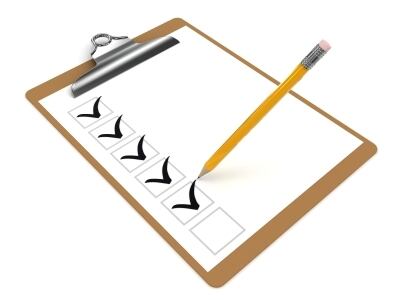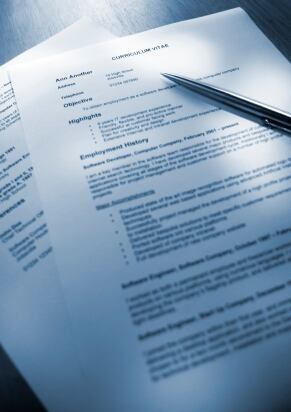Auditor Jan Weide has over two decades experience in the food processing industry, working for the past five years as a certification manager at SGS in Holland, a global inspection, verification, testing and certification company.
In the third part of FoodProductionDaily's special edition on plant audits and quality control, Weide (pictured) talks about the upsides and downsides of auditing, what it takes to become an auditor and how to successfully pass a certification test.
Life as an auditor: the upsides, downsides and the challenges
Upsides: Variety is one of the job’s attractive points. It’s challenging operating in such different types of industries, but you learn a lot.
Downsides: The job involves a lot of travelling and although it is nice to move around and see different places, waiting in traffic can be time consuming.
There is also potential conflict in the role because although the customer is paying you to tell them the truth, sometimes they’re not happy with the result and they want a different outcome.
Challenges: A lot of things are changing, legislation is changing. Keeping up to speed with new developments and new standards is a challenge.
This year new food safety standards are going to be reissued, this means auditors working against these standards will need to do new courses to stay informed.

A day in the life of an auditor
Arrival and introductions: 8.50am
You need to get your timing right on arrival at the plant. You need to arrive just before the opening time to introduce yourself to the quality manager.
Opening meeting: 9.00 am – 9.30am
Here we introduce SGS and also the standard that we’ll be assessing the company against. We also make sure that all the key details we have are correct and clear. We then run through the audit and how it’s going to take place.
Introductory factory tour: 9.30am - 10.30am
If it’s a first time visit we’ll do an initial factory tour just to get familiar with the facility and what it looks like.
Going into the books: 10.30am – afternoon
During this second tour we can examine things in more detail. We’ll visit the different departments such as production, management, purchasing and engineering
Some of the things we’ll be looking at include who’s trained for what, how people are introduced into the specifics of the factory’s processes and making sure they have an in depth knowledge of these processes.
At the end of the tour we’ll collect our findings. Audits often take more than one day, the time it takes is dependent on the type of audit (initial or surveillance) and the size and complexity of the company.
Closing and feedback meeting: 16.30 – 17.30 (Sometimes we’ll finish at 18.00 or even later if it’s a long day)
Feeding back our findings to the company is something that is particularly challenging for me in terms of keeping to the time frame that’s set. Sometimes we miss our pre-scheduled deadline, in this situation we’ll ask for some additional time and then go back another day and finish it.
Generally if we already know the company the audit won’t overrun, but if we don’t it can sometimes be more complicated and time consuming. For example, if we’ve expected to audit a facility of 20 people but it turns out to be 80 it might be hard to meet the deadline we initially set.
We try and avoid running over by getting as much information about the company as possible before the audit. Often we know in the opening meeting and will confirm this if we don’t think we’ll be able to meet our deadline.

Passing an audit: Weide’s top tips
- To avoid running over the set time frame, make sure the company information you have given is as up to date as possible before the audit. Often details can turn out to be outdated, for example if a company grows. Sometimes we do a certification and in a few year’s time the company has doubled in size.
- Make sure you have sufficient in-house knowledge with the existing system you’re using. Usually sufficient knowledge is present about products and processes, however knowledge about potential hazards and the standard itself needs to be present. If this is not present within the company, external consultation may be needed.
- Read the standard. This sounds simple but it’s important. At the end of the day you’re being certified against this standard, therefore you need to be familiar with it.
- First impressions, opinions can form from the moment the auditor approaches the facility’s gates. As soon as I arrive I’ll be looking and thinking is the entrance dirty? Is it clear where the entrance is?
- Be aware about the impact that changes (new products, new equipment, new ingredients, new methods) have on food safety. Also think about changes, to equipment and buildings for example, that can take place slowly over time.

How to become an auditor
Variety: The ideal candidate would have spent ten years working in a number of different food industries. Variation will give the candidate a good balance and will also prepare them for the nature of the auditor role, which involves working across many different types of food processing plants.
Quality control experience: Although ten years experience is ideal, three to five years working in roles involved in quality function, control functions, and quality control measures is a good asset to the CV of a want-to-be auditor.
A quality control manager would be a good candidate as this person would really know the industry we are auditing.
Technical abilities: Ideally the candidate would have an education in technical food technology a related subject such as biology, or a qualification specifically related to food.
Without this type of education the potential auditor would have to have a lot of experience in the food industry behind them to be at the same level.
Attitude: The ability to reach an objective finding, to give neutral opinions and to be able to communicate with many different types of people is important.
You need to be able to meet all kinds of standards, but if you’re in the job with the wrong attitude it’s going to go wrong.
CV: Jan Weide
Work experience
1999-present: SGS Nederland B.V. Systems & Services Certification
Role: Certification manager
Responsibilities include: Managing the team of auditors and control of accreditations (ISO 17021, EN 45011, ISO 17021) for ISO 9001, ISO 14001, HACCP, ISO 22000, VCA and others.
Role: Product manager: Food
Responsibilities include: Development and maintenance of food-related schedules, e.g. HACCP, BRC, IFS, SQF 2000, ISO 22000, Catering and Qualification of food auditors
Role: Lead Auditor
Responsibilities include: Auditing against a variety of standards in food industry, ranging from soy crushers to catering companies and from tomato growers to feed producers.
1998-1999: Friwessa, Holland
Producer of “specialty fats”, vegetable oil and fat based products
Role: Application technologist
Responsibilities include: Organisation of pilot plant trials and preparation/presentation of applied research in customer conference.
1990-1999 Vonk Cheese Factory/ Golden Vale Holland
Processed Cheese factory
Role: Product developer, manager of quality and development
Responsibilities include: Developing new products, maintaining production and product quality
and developing a HACCP-plan.
Education:
1980-1988: Wageningen University: graduated as engineer in Food Technology
Main subject: Dairy technology, minor subjects in Food Chemistry and Marketing.
1974-1980: VWO: SGL Lelystad, Atheneum, technical orientation.
Additional courses:
2003-2005: GMP-Feed courses
2002: SGS Organic Course
2000 (and 2001): Lead Assessor Training SQF 2000
1999: Lead Assessor Training
1998: Director and Senior Executive Program (University of Ulster)
1996: Marketing (NIMA-A)
1994: Business methods program
1993: Introduction to higher management (ISW)
